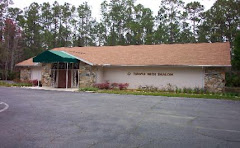

A group of Flagler County teenagers, concerned about Israeli soldiers kidnapped by U. S. designated terrorist organizations Hamas and Hezbollah, have petitioned both United Nations Secretary-General Ban Ki-Moon and the Ambassador of Lebanon to the United Nations, Nouhad Mahmoud for action on Israeli soldiers kidnapped and held captive by Hezbollah in Lebanon and Hamas in the autonomous Palestinian territories. The teens, part of Yad B’Yad, the youth group of Temple Beth Shalom, “respectfully ask that the officials do everything possible to effect the release of three Israeli soldiers kidnapped by Hezbollah and Hamas.” The Yad B’Yad members, all students in Flagler County Public Schools, also urged the leaders “to do everything in your power to help secure their release by implementing U.N. Security Counsel Resolution 1701 which requires Hezbollah and the Lebanese government to release Ehud Goldwasser and Eldad Regev” and asked the diplomats to use their offices to “demand that Hamas unconditionally release Gilad Shalit.”According to the United Nations, Goldwasser and Regev were kidnapped in a battle that began at around 9 a.m. , July 12, 2006 when Hezbollah launched rockets on Israeli military positions along the Lebanese border, apparently as a diversion. A force then attacked two armored IDF Humvees patrolling the border near the Israeli village of Zar'it with anti-tank rockets, and captured the two soldiers. An Israeli Merkava Mk. II tank was damaged by a 200 kg improvised explosive device while attempting to give pursuit, killing all four crewmembers. "Fulfilling its pledge to liberate the Arab prisoners and detainees, the Islamic Resistance... captured two Israeli soldiers (Ehud Goldwasser and Eldad Regev) at the border with occupied Palestine," Hezbollah said in a statement on the 14th of July, 2006.
Twenty year old Gilad Shalit was abducted on Sunday morning, June 25, 2006 by Palestinian terrorists who attacked an Israeli army post on the Israeli side of the southern Gaza Strip border after having crossed through an underground tunnel near the Kerem Shalom border crossing. During the morning attack, two Israeli soldiers were killed and three others wounded, aside from Shalit, who himself suffered a broken left hand and a light shoulder wound after his tank was hit with a rocket propelled grenade.
Shalit’s captors issued a statement on Monday, June 26, 2006, offering information on Shalit if Israel agreed to release all female Palestinian prisoners and all Palestinian prisoners under the age of 18. The statement came from the Izz ad-Din al Qassam Brigades (the military wing of the Palestinian governing party Hamas), the Popular Resistance Commitees (which includes members of Fatah, Islamic Jihad, and Hamas), and a previously unknown group calling itself the Army of Islam
Twenty year old Gilad Shalit was abducted on Sunday morning, June 25, 2006 by Palestinian terrorists who attacked an Israeli army post on the Israeli side of the southern Gaza Strip border after having crossed through an underground tunnel near the Kerem Shalom border crossing. During the morning attack, two Israeli soldiers were killed and three others wounded, aside from Shalit, who himself suffered a broken left hand and a light shoulder wound after his tank was hit with a rocket propelled grenade.
Shalit’s captors issued a statement on Monday, June 26, 2006, offering information on Shalit if Israel agreed to release all female Palestinian prisoners and all Palestinian prisoners under the age of 18. The statement came from the Izz ad-Din al Qassam Brigades (the military wing of the Palestinian governing party Hamas), the Popular Resistance Commitees (which includes members of Fatah, Islamic Jihad, and Hamas), and a previously unknown group calling itself the Army of Islam
.
Yad B’Yad members are circulating similar petitions to all who wish to be heard on behalf of the missing soldiers. Postcards are available asking simply for “a sign of life” from the three missing soldiers. The young Flagler County students have also taken to wearing “dog tags” with the names of the missing soldiers until they are released.
Yad B’Yad members are circulating similar petitions to all who wish to be heard on behalf of the missing soldiers. Postcards are available asking simply for “a sign of life” from the three missing soldiers. The young Flagler County students have also taken to wearing “dog tags” with the names of the missing soldiers until they are released.




































